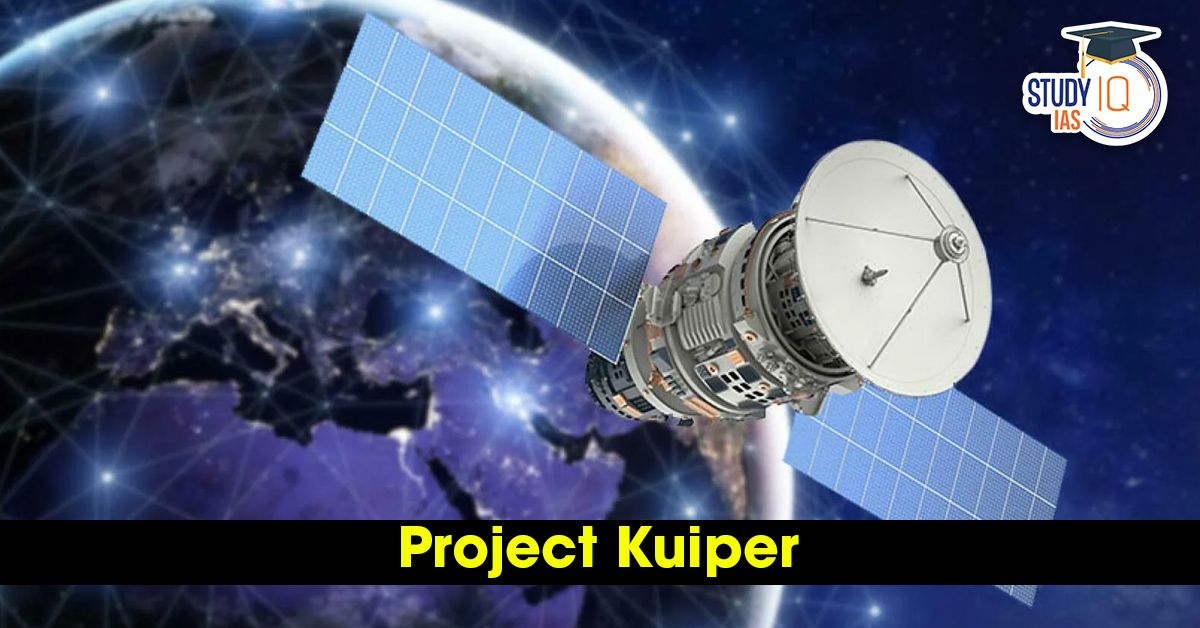Context: The first 27 satellites for Amazon’s Kuiper broadband internet constellation were launched into space from Florida recently.
About Project Kuiper
- Project Kuiper is Amazon’s $10 billion initiative launched in 2019 to build a low-Earth orbit (LEO) satellite constellation for global broadband internet.
- LEO is an area of space that extends up to 2,000 kilometres above Earth.
- The project aims to bridge the digital divide by providing high-speed internet to underserved rural and remote areas.
- Total Planned Satellites: 3,236 satellites to be launched into low-Earth orbit (LEO).
- It competes directly with Spacex’s Starlink.
- Mission: To close the digital divide by providing high-speed, affordable broadband to a broad base of customers, such as homes, businesses, government offices, and other organisations in underserved regions.
Key Features of Project Kuiper
- Large Constellation: It is planned to place more than 3,200 satellites in LEO, which will be in three orbital shells at altitudes of 590 km, 610 km, and 630 km.
- Low Earth Orbit (LEO): Working at LEO lowers the latency (the lag in data transfer) as opposed to standard geostationary satellites, making the internet experience faster and more interactive.
- Global Coverage: The constellation will offer coverage from 56 degrees north to 56 degrees south latitude, covering much of the world’s population.
- Customer Terminals: Amazon is creating different customer terminal solutions to address different requirements, from small, low-speed devices (up to 100 Mbps) to standard terminals (up to 400 Mbps) and high-bandwidth business solutions (up to 1 Gbps).
- Optical Inter-Satellite Links: The satellites will have laser links to talk to one another in space, forming a mesh network that lessens the dependence on terrestrial ground stations and enhances network efficiency.
- Ground Infrastructure: A worldwide network of ground stations will be built to link the satellite constellation to the current internet infrastructure. Amazon Web Services (AWS) will drive much of this infrastructure.
- Phased Deployment: The deployment is scheduled in several phases. The initial operational launch of 27 satellites took place on April 28, 2025, on a United Launch Alliance (ULA) Atlas V rocket. Amazon must launch at least half of its intended constellation (approximately 1,618 satellites) by July 2026, according to the FCC.


 Advanced Air Defence Radars: Types, Comp...
Advanced Air Defence Radars: Types, Comp...
 Ion Chromatography, Working and Applicat...
Ion Chromatography, Working and Applicat...
 Broadly Neutralising Antibodies (bNAbs):...
Broadly Neutralising Antibodies (bNAbs):...

























